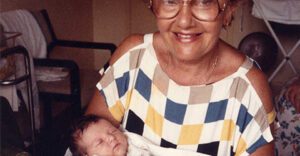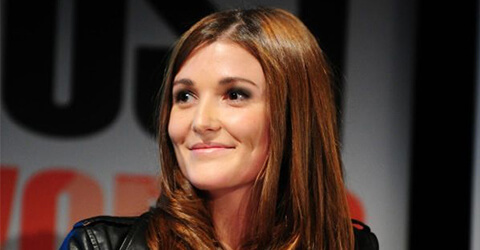Tara Winkler is the Co-Founder of the Cambodian Children’s Trust (CCT). Over the last 14 years, she has led CCT through several significant organizational milestones, including the transition from an orphanage to a family empowerment model called the Village Hive. Today, CCT is a grassroots, community-led organization focused on shifting power to local communities to achieve sustainable, systemic change. Her TED Talk ‘Why we need to end the era of orphanages’ has received over a million views. Winkler’s book ‘How (NOT) to Start an Orphanage’ was published by Allen & Unwin in 2006.
Winkler had a comfortable childhood growing up in the eastern suburbs of Sydney with her tight-knit family constantly supporting her. She says her family is a strong pillar of support for her and has significantly influenced the person she is today, especially her parents and grandparents, who have always fought against social injustice.
Both her grandmothers played an important role in her life. Her maternal grandmother, Joan, was an ardent social activist who helped her with funds and constant support to set up CCT. Winkler was also close to her paternal grandmother, Nagy who survived the Holocaust as a young woman and was interviewed by Steven Spielberg’s ‘Survivors of the Shoah’ project. Winkler fondly reminisces, “Nagy was never bitter or angry. She would always end her stories by reminding me of how grateful we should be for our blessed life — living in a beautiful country surrounded by family. It’s no coincidence that the children I’ve chosen to dedicate my life to are also grandchildren of genocide survivors.”

In Frame: Tara With Her Grandmother, Nagy
Her journey began at the tender age of 17 when she received a heartbreaking call from her father informing her that her beloved Nagy had passed away. Upon receiving the news, Winkler fell into a state of despair and hopelessness. To boost her spirit, on her 18th birthday, Winkler’s parents gave her a choice; she could either host a party or get a ticket to explore the world. She says, “I didn’t hesitate for a moment. In 2005, I set off to go backpacking through Southeast Asia.”
The first part of her trip began with an Intrepid Travel tour through the well-trodden loop of Thailand, Laos, Vietnam and Cambodia. When they reached Cambodia, one of the first activities listed on the itinerary was visiting an orphanage. Winkler recalled her experience at the orphanage, “We played with the children and watched them perform a traditional apsara dance.”
After the tour ended, she extended her holiday in Cambodia for another month. Winkler recalled, “I was feeling uncomfortable enjoying my vacation, sipping cocktails by the pool, while surrounded by poverty and wanted to do something to give back. Inspired by my initial visit to a Cambodian orphanage, I decided to buy some clothes, books and toys to donate to a few orphanages in Battambang, the second largest city in northwest Cambodia.”
One of the orphanages she visited was desperately poor. She said, “I had never encountered poverty like that in my life. They didn’t have funds for enough food, clean water or medical treatment and so I was compelled to do something more to help.”
Winkler returned to Australia and set up a fundraiser for the orphanage; she returned to Cambodia the following year to volunteer at the orphanage for a few months. Winkler said, “I taught English, donated water filters and food, hired a nurse and took all of the kids to get vaccinated and to the dentist for the first time in their lives.”
Once she returned to Australia, she continued supporting the orphanage and visiting Cambodia from time to time. But on her third visit in 2007, Winkler discovered that the orphanage was corrupt. She recalled the horrifying incident, “The Director had been embezzling every cent donated to the orphanage and, in my absence, the children were suffering gross neglect that they were forced to catch mice to feed themselves. I also found out later that the director had been physically and sexually abusing the kids.”
Winkler connected with a local, Pon Jedtha, who was previously raising funds for the orphanage but resigned due to the corruption in the organization. He was deeply concerned about the welfare of the children and asked Winkler to partner with him to set up a new organization to rescue the kids.
Winkler said, “I was hesitant at first. I was only 21 years old and felt terribly out of my depth. But after the kids begged us to help get them out, I realized I couldn’t bring myself to turn my back on children who I had come to know and care about. So Jedtha and I worked together to get approval from the local authorities to set up a new orphanage.”
On August 17 2007, they visited the corrupt orphanage with a bus. The authorities stormed in and announced that the children had a one-time chance to leave the orphanage if they wanted to. The children gathered their meagre belongings and ran for the bus. That day, Winkler and Jedtha gave fourteen children a safe, new home and officially became CCT’s Founders and Directors.

In Frame: Tara And Jedtha
CCT, in its initial phase, was a well-resourced orphanage, operating therapeutic programs with a very high standard of care. But despite their best efforts, the care plans they put in place for the children had limited benefit. The behavioural issues they witnessed stemmed from attachment issues due to the trauma of being separated from their families and being raised in an institutional environment. The constant rotation of staff and volunteers coming in and out of their lives exacerbated the attachment issues. In almost every case, they also found that young adults who had grown up in the orphanage failed to transition into independence, thereby remaining dependent on the orphanage well into adulthood.
Winkler opined, “I realized our orphanage was a part of the problem, and knowing better comes with a moral imperative to do better.” After a lot of trial and error, they ultimately created a new upstream model of child protection called the Village Hive. In this model, they reunited the children with their families and worked with these families to help them thrive and succeed. The model is successfully mobilizing entire communities to protect children and empower families.
Winkler says, “The real magic began when we realized that the best outcomes were achieved when we put families in the driving seat, and we supported them alongside as allies and advocates. When families and communities are in control, co-designing solutions that make sense to them, transformations are profound and long-lasting.”
One success story of the Village Hive in action is the story of a single mother, Trop. She worked multiple jobs, had considerable debt, and all her four children were underweight and struggling at school. When Village Hive social workers met with Trop, she had been unwell, impacting her ability to work, and she couldn’t afford to go to the hospital. The Village Hive nurses examined Trop and helped her access speciality health services at the local hospital. They also coached Trop in financial literacy and supported her to pay off her debt in a sustainable way. They then helped Trop set up her own business, growing vegetables and raising chickens.
Today, Trop is earning enough to support her family and send her children to school. All four children are healthy and have gained weight. Trop says, “My family life is so much better now. I see a good future for my children because I can provide for them as they grow.”
In conclusion, Winkler says, “My entire focus now is on changing the system from within, by recognizing the capabilities of local communities and promoting true empowerment and equality. I believe the results will be liberating for us all.”








